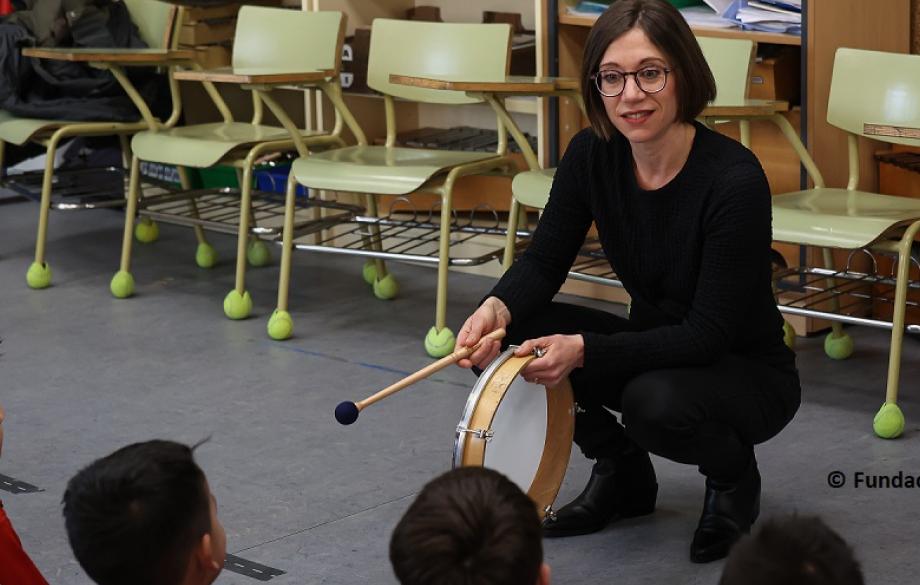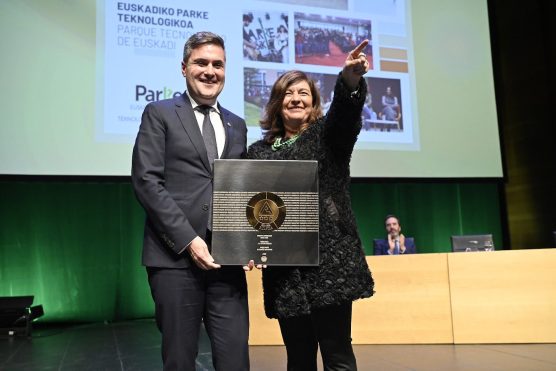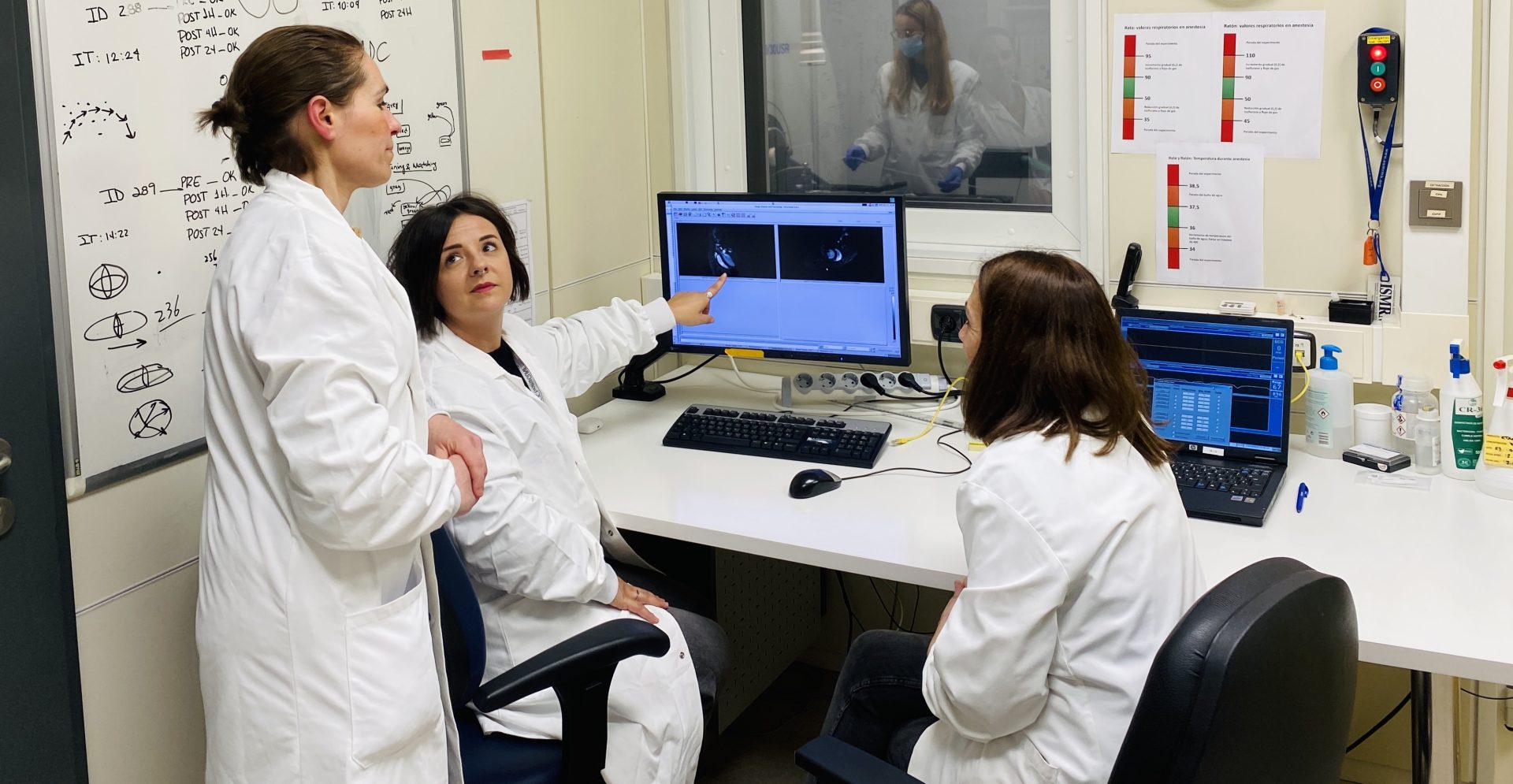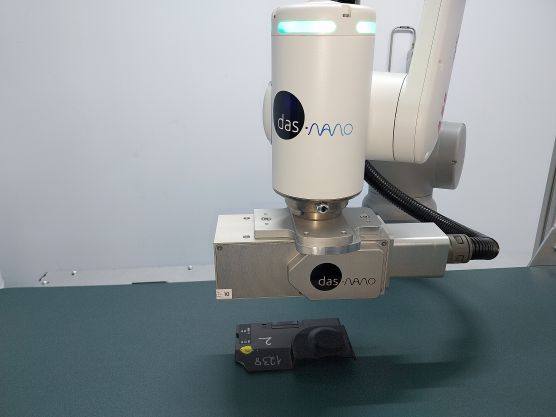Learning to read with rhythm to become better readers

A school in Madrid has been the setting for experimental training aimed at improving sensitivity to rhythm and testing whether it has an impact on brain capacity and reading performance.
The sessions have been carried out with 5-year-old children from February to May and the results will be evaluated in the short and long term, in January 2025, when the students will be in the first year of Primary Education.
The aim is to validate in a real environment a new music intervention programme based on rhythm at an early age to prevent and reduce the appearance of reading problems such as dyslexia.
The project by researcher Marie Lallier, from the Basque research centre BCBL, is funded by the BBVA Foundation’s Leonardo Grants.
The Madrid public school CEIP Nuestra Señora de la Fuencisla is the setting for studying whether incorporating a novel rhythm-based musical training into educational processes can generate positive changes at brain level that benefit the acquisition of reading at an early age.
Specifically, the programme aims to improve young children’s sensitivity to musical rhythm and to test whether its regular and repetitive characteristics can help them develop their cognitive systems in such a way that they can better synchronise to rhythmic auditory events such as speech.
The research project involves monolingual Spanish-speaking children in two 5-year-old infant classrooms to find out whether this introduction at a key linguistic learning stage can also reduce the occurrence of language-related problems and disorders such as dyslexia.
The researcher Marie Lallier, from the Basque research centre specialising in cognitive neuroscience of language, Basque Center on Cognition, Brain and Language (BCBL), is leading this project with the support of a Leonardo 2023 grant from the BBVA Foundation.
Classroom intervention
After Marie Lallier’s team evaluated the cognitive skills, reading performance and neuronal synchronisation of all the young volunteers, the second phase of the project began in February: musical-rhythmic intervention in the classroom.
Until May, over the course of a school term, the school’s music teacher taught an experimental programme designed by Arantza Campollo Urkiza, a lecturer at the Complutense University of Madrid, together with Lallier’s team, to a class of 30 pupils for one hour a week.
The sessions, based on rhythmic musical activities in the fields of expression, interpretation and musical creation, have mixed two different languages: Spanish and English. “We believe that combining the two languages will promote neural sensitivity and synchronisation to rhythm,” explains Marie Lallier, BCBL expert in charge of the project.
At the same time, another control group of 30 students has been doing the usual musical training, as defined in the school’s annual programme, to test its effectiveness against the experimental programme.
Once the period is over, BCBL experts will analyse and evaluate the short-term effect of this musical-rhythmic intervention on both groups of children using tools such as electroencephalography to see if there have been significant changes in brain activity before and after the intervention.
“The location in a non-bilingual community like Madrid is fundamental to avoid effects on reading performance caused by exposure to other languages. We expect the experimental group to show better neural synchronisation with speech and better cognitive skills important for reading acquisition,” says Lallier.
In addition, in January 2025, a final phase will be carried out to assess the long-term impact of the intervention, 9 months later, when the children are in the first year of primary school and begin to learn to read formally.
The expected outcome is, on the one hand, a confirmation of the benefits of music education and universal and playful activities such as singing or listening to music in order to design new rhythm-based intervention strategies that can be used for the early treatment of reading acquisition difficulties such as dyslexia and for the enhancement of neurocognitive mechanisms in children with typical reading development.
On the other hand, neuroscientists, psychologists, educational counsellors and teachers will be provided with an intervention programme validated in a real environment and with a scientific basis to be applied in their daily practice.
Connection with rhythm
The study, which will last for a total of 18 months, builds on other work carried out by the BCBL that shows, for example, that phonological language processes, which contribute to reading acquisition, are deeply connected to the brain’s processing of rhythm.
“In the last decade, our research group has shown that speech perception generates a synchronisation between speech rhythms and neural oscillations in auditory brain regions in the right hemisphere, which is also involved in musical processes,” adds Marie Lallier.
In this sense, other studies carried out by the Basque centre suggest that music could be a beneficial tool for children with reading difficulties such as dyslexia, who show reduced neural synchronisation with speech, to develop effective compensatory strategies at the brain level in order to mitigate their weakened rhythmic sensitivity and optimise their reading level.
“Since both musical and linguistic rhythm processing originates in the right hemisphere, it is not surprising that music education has a positive transfer on linguistic and phonological acquisition,” she says.
However, the neurocognitive mechanisms associated with these possible benefits observed after a musical intervention are still unknown, which leads to a lack of agreement on what should be the focus of the interventions.
The new project by BCBL researcher Marie Lallier, who received one of the Leonardo 2023 Grants funded by the BBVA Foundation, focuses on rhythm to shed light on this lack of knowledge.




